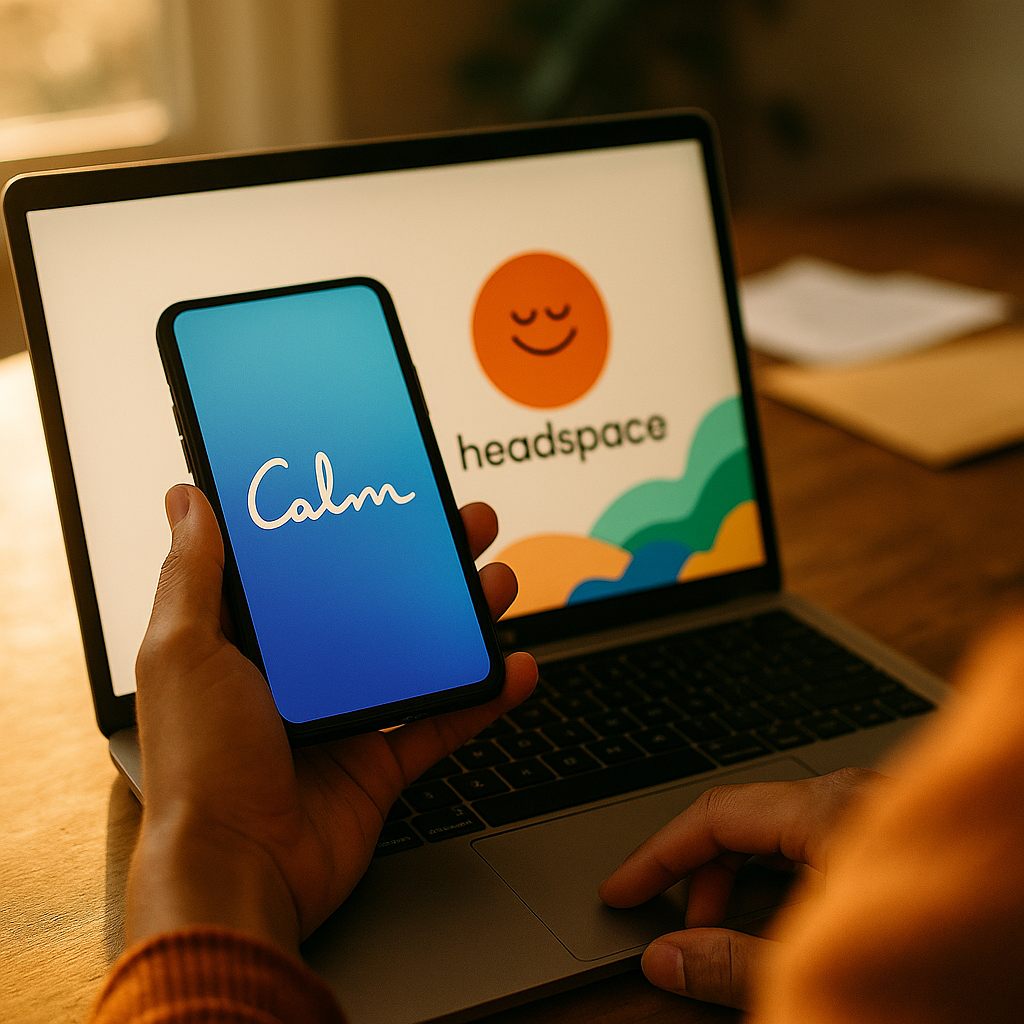The global explosion in mindfulness practices has fueled the rise of “mindfulness” apps like Calm and Headspace, making them powerful marketing channels. Exploring smart marketing on mindfulness apps unlocks access to engaged, health-conscious audiences. But what strategies work best, and how do brands navigate this unique, mission-driven landscape with integrity?
Understanding User Intent on Mindfulness Apps
Mindfulness app users open Calm, Headspace, and similar platforms to foster mental well-being, reduce stress, and improve sleep. According to Calm’s 2025 usage report, over 75% of daily sessions start with meditation or sleep-related content. Understanding this user intent is vital—effective marketing aligns with the app’s mission of well-being, rather than interrupting it. Anything perceived as intrusive, irrelevant, or sales-heavy risks alienating users. Instead, authentic and value-driven engagement resonates best with these digital wellness communities.
Ad Formats Used by Calm, Headspace, and Competitors
Calm, Headspace, Insight Timer, and other top mindfulness apps carefully curate their ad formats to preserve a serene user experience. Most commonly, they offer:
- Sponsored sessions: Guided meditations, sleep stories, or classes created in partnership with brands. For instance, a tea company may sponsor a “Mindful Tea Ritual” meditation.
- Audio ads: Short, soothingly voiced spots before or after a meditation or story. These focus on soft product integrations or reminders rather than hard sales.
- Brand challenges: Challenges like “7 Days of Kindness” co-branded to drive both app engagement and brand awareness.
- Content sponsorship: Landing pages or collections branded with a sponsor, drawing a thoughtful connection between the brand and mindfulness outcomes.
This ad ecosystem is highly curated. In 2025, Headspace reported a 43% higher user engagement rate with brand content explicitly tied to stress relief or wellness, versus generic product placements.
Building Brand Trust Through Educational Content Marketing
Expertise, experience, authority, and trust (EEAT) are essential when marketing on mindfulness apps. Users expect content grounded in psychological research and authenticity. Brands succeed by developing content that demonstrates shared values, such as:
- Expert interviews or co-created guides with clinicians or meditation instructors
- Evidence-based microcontent: Brief breathing exercises, gratitude prompts, or mindful check-ins designed with scientific backing
- Transparent storytelling: Brands openly sharing their own journey toward wellness, sourcing, or social impact
For example, in early 2025, a popular nutrition brand co-launched a “Mindful Nutrition” meditation series in Headspace, integrating nutrition science, gentle reminders, and practical eating tips for mindfulness—all delivered free to users. This strategy earned a 32% boost in favorability among mindful consumers.
The Importance of Authentic Partnerships and Co-Branded Initiatives
Collaborations are particularly effective on mindfulness platforms when rooted in authenticity and shared purpose. Consumers in 2025 expect partnerships to offer real value—superficial “greenwashing” or wellness-washing are swiftly rejected.
Successful co-branded content often features:
- Nonprofit collaborations for mental health awareness days or community wellness drives
- Expert-led webinars or live sessions featuring both brand representatives and mindfulness teachers
- Long-term series (not just one-off promotions) to foster ongoing trust and provide measurable value to users
EEAT is boosted when brands support causes relevant to the mindfulness community or demonstrably invest in mental health education, rather than focusing purely on sales metrics.
Measurement and KPIs for Mindfulness App Campaigns
Traditional KPIs such as click-through rate or direct conversions often miss the point in mindfulness environments. Instead, leading brands in 2025 prioritize:
- Engagement time: Are users spending more time with your content or meditation as a result?
- Brand uplift studies: Has the campaign increased positive perception or loyalty among wellness-oriented users?
- Community participation: Are users joining co-branded challenges, commenting on workshops, or sharing their experiences?
- Well-being impact: Where possible, brands and apps now use surveys or in-app feedback to gauge if content improved user mood or stress levels, showing concrete social value.
Brands that demonstrate improvements in these areas win both consumers’ trust and long-term loyalty, cultivating deeper relationships over transactional metrics.
Staying Compliant and Ethical in a Sensitive Space
Given the vulnerable nature of audiences seeking mental health and anxiety relief, regulatory, ethical, and privacy considerations are central. The leading mindfulness apps in 2025 use strict vetting to keep advertising relevant and responsible. For marketers, this means:
- Following regional regulations on health claims and sensitive data usage
- If referencing scientific benefits, always cite current research or guidelines
- Offering opt-out and robust privacy protections
- Steering clear of content triggering to those seeking help with anxiety, depression, or trauma
Brands that honor these principles strengthen their EEAT signal and support long-term growth within the wellness economy.
FAQs About Marketing on Mindfulness Apps
-
What types of brands can benefit from advertising on Calm or Headspace?
Wellness, nutrition, fitness, health technology, books, eco-friendly products, and even travel brands can succeed—provided their message aligns authentically with mental well-being. -
Are paid ads intrusive on mindfulness apps?
Leading apps prioritize native, content-driven ad formats such as sponsored meditations or co-created challenges to maintain a seamless, non-intrusive experience. -
How do mindfulness app campaigns differ from social media ads?
Unlike social media, mindfulness audiences seek calm, positivity, and evidence-based content. Marketing here must be soft-sell, credible, and supportive of mental health. -
Can performance metrics be tracked on these platforms?
Yes, Calm, Headspace, and others provide engagement and brand lift insights, with increasing use of well-being impact metrics in 2025. -
How can brands ensure their campaigns are ethical?
Work closely with the app’s content and compliance teams, root campaigns in evidence, provide transparency, and avoid any misleading or anxiety-inducing messaging.
Marketing on mindfulness apps like Calm and Headspace in 2025 means putting well-being, authenticity, and trust at the forefront. By respecting user intent and curating valuable content, brands can build meaningful engagement with one of the world’s most mindful audiences—unlocking long-term growth and impact.
